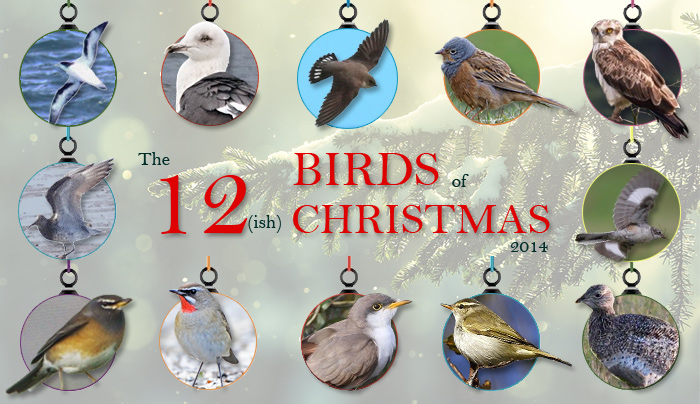
The whole “12 Birds of Christmas” thing goes ever-so-slightly out of the window at this point, but rules are there to be broken and all that - and although the “rules” here may be still in tact (there’s actually no rules here at all really…that’s not my bag - did you not see the rarity photos thing in 2013?), the “rules”, such as they are, have been bent a little…
Yes, like the cartoons of old (and new) we’re in full on Brucey-bonus double-bill mode for today’s selection of oddments from the top try of the chocolate box of pukka-rares that have found their ways to our shores across the last 12 months.
So, like a desperado ferreting around for the elusive Coffee Cream and finding not one but two (‘coz no one else likes them…), we’re in to a supreme duo of far-flung thrushes which will always make even the most-hardened of rarity enthusiasts go weak at the knees…
Siberian Thrush - Scousburgh, Mainland Shetland, 15 Oct
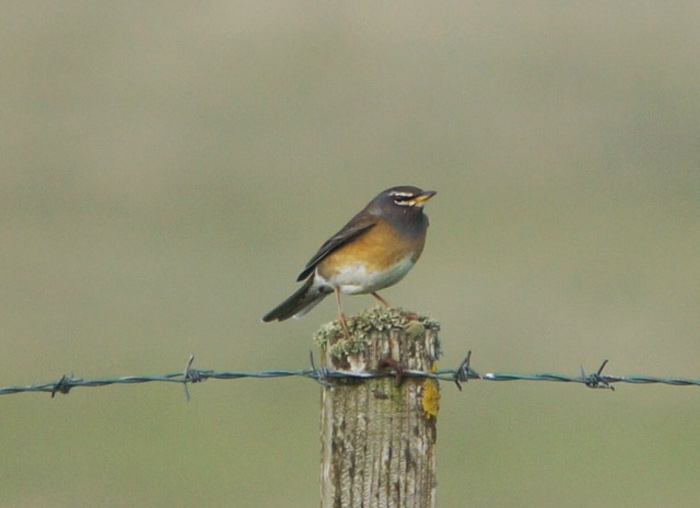
It seems strange looking back three months or so to see an exquisite male Eyebrowed Thrush playing second-fiddle within the round-up for September 24th-30th but that was one crazy week and sometimes you go with the flow and pop the rarest bird at the top of the list.
It was a week stuffed to the rafters of outstanding birds and, in true classic autumn style, saw top-drawer rarities emerge from both the east and west…
As it happened, it was “west was best” in terms of the lead bird that week - the somewhat elusive and all-too-brief late afternoon arrival of an Ovenbird on Cork’s Mizen Head, joining a Nearctic haul that week which included Red-eyed Vireo, Myrtle Warbler and Swainson’s Thrush around Shetland with another couple of REVs looming large in Cork and Clare.
With all this “American action” there was also significant news of dreamy eastern rares too - late news of a Norfolk Pallas’s Grasshopper Warbler got people hot under the collar, whilst many people’s ultimate “Sibe” - White’s Thrush - dropped on to a bird-filled Shetland.
This was, of course, not the best thrush of a frantic week, so let’s rewind to the final day of September for that Orkney cracker…
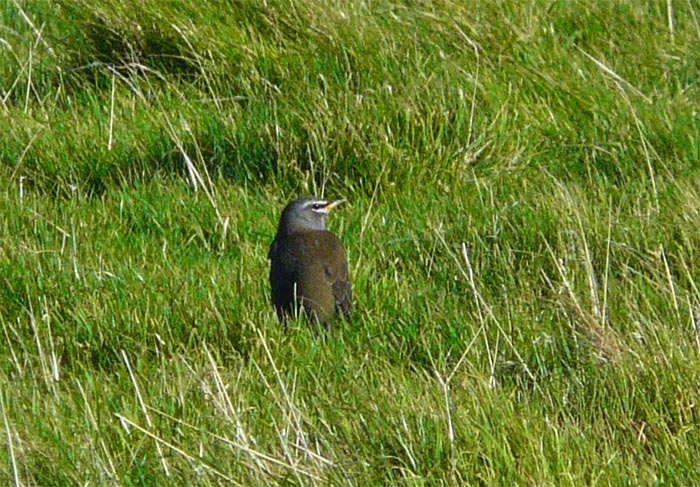
The staff at North Ronaldsay’s Bird Observatory really did have quite some autumn this year…so often vying for attention alongside the huge chain of Shetland off to the north, this northernmost island on the Orcadian chain - covering an area of some 2.7 square miles - came up trumps so many times this autumn and few would argue about the sheer quality of the delightful male Eyebrowed Thrush that emerged during the middle of the day on September 30th.
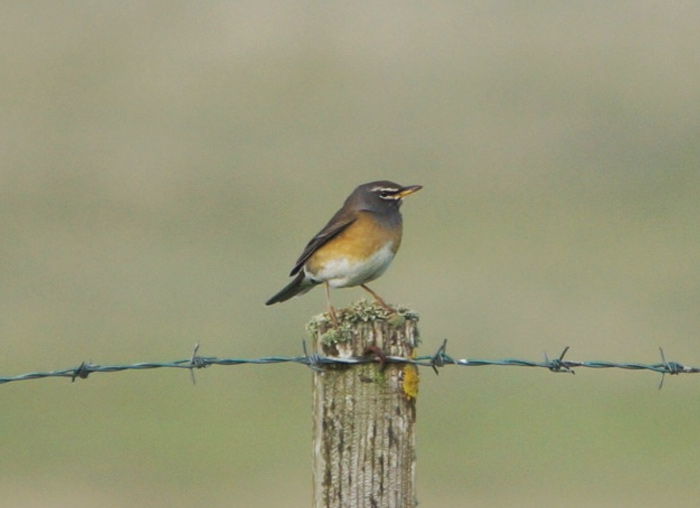
The day had already become notable for the discovery by warden Mark Warren of a Pechora Pipit - soon afterwards though things would get rather better, thanks to the German observatory volunteer Kitty Mermagen.
It was, in fact, Kitty’s last day on the island and before she headed back to the Obs., she took one last wander around before heading back to pack. As she neared Holland House, Kitty saw a trio of thrushes, which she thought was a single Redwing and a couple of Song Thrushes - but as they took flight, Kitty was struck by one bird in particular that “looked a bit weird”…
After a few minutes searching, Kitty relocated the bird…and she takes up the story once more.
”I could see it didn’t have any markings on its sides and after a few minutes I re-found it perched on the post and now also noticed that it had a purple/grey head with a small white stripe above the eye, a really obvious yellow bill an orange breast and sides. It disappeared, so I headed back to the observatory as I knew it was something good but not sure exactly which species, where Mark Warren was gathering people to go and look for the Pechora Pipit he’d just seen. “
”I ran into the lounge where Sara Marcias was looking up the Pipit and grabbed the book and on turning to the Thrush page found my mystery bird - it was an Eyebrowed Thrush. Upon announcing this to Mark, I could tell he didn’t believe me but at this stage I had no idea quite how rare this bird was as we all dashed out to try and re-find it straight away.”
I was pretty nervous until we did just that, about ten minutes later, when Mark saw it on the bank and screamed S@#T KITTY!!!! We all started to panic a bit (well mainly Mark!) as the bird flew to a fence and then showed really well and we managed to get most people to see the bird quickly as it stayed around the Observatory for the rest of the day, with Sara almost managing to catch it in one of the Heligoland traps in the evening. It was an absolutely stunning bird, which we believe to be adult male, and a great way to end my experience on North Ronaldsay.
This September’s Eyebrowed Thrush was just the fourth definite record since the start of the 2000’s and the second for North Ronaldsay in the last four years - a rather drab by comparison first-winter female was present on the island on October 5th-6th 2009.
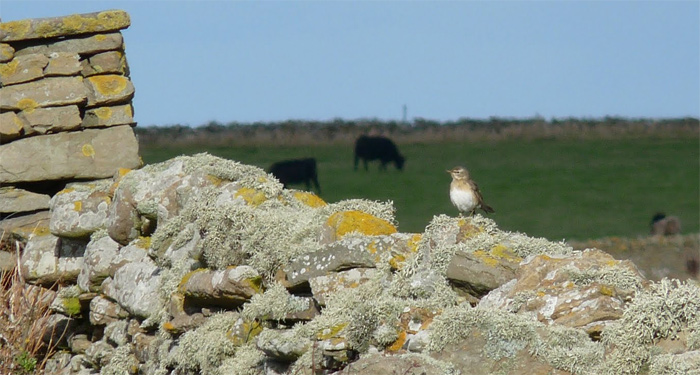
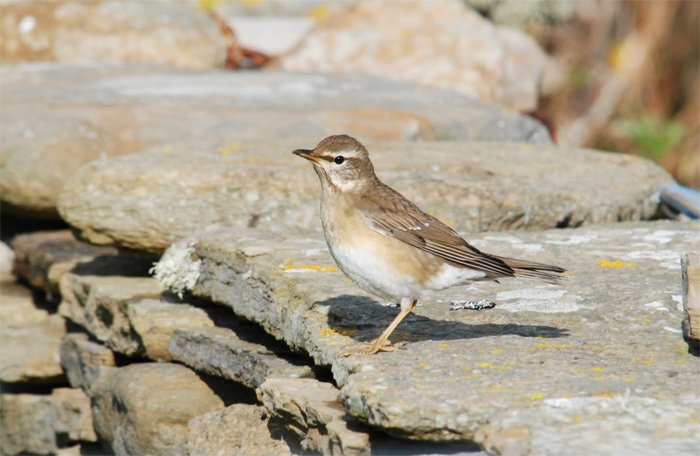
Orkney can now boast three of these Far Eastern travellers for the books, along with the Ronaldsay duo in the 2000’s is the first - found at Evie, on Mainland, in September 1984. Those trio of Orcadian records are part of 21 records in all, the first three of which were all found at the tail end of 1964 - in October of that year birds were seen in Northamptonshire and the Outer Hebrides, with one in December on Scilly - and those famous islands have managed seven Eyebrowed Thrushes to date, the most recent accepted record coming in 1993 (tho’ one was reported briefly on St. Martin’s in the autumn of 2013).
As seems so often the way these days, the best birds of the autumn were strewn like feathered flotsam and jetsam across the distant islands of Britain and Ireland throughout the autumn, and the second part of this Eastern thrushy double-bill had, remarkably, already shown up on another far-flung distant Euro-island earlier in the autumn, as we jump over the sea from Orkney to Shetland.
…and so it was, with an air of resigned inevitability, that the “Mega Alert” that blared out as dusk fell on October 15th was only ever going to herald the fresh appearance of another superb bird for somewhere well to the north of the British mainland - as the penchant for off-island arrivals remained the de rigueur choice for so many of the annual rare-fest invaders that flop across the oceans, large and small, to make landfall somewhere within our nation’s shores.
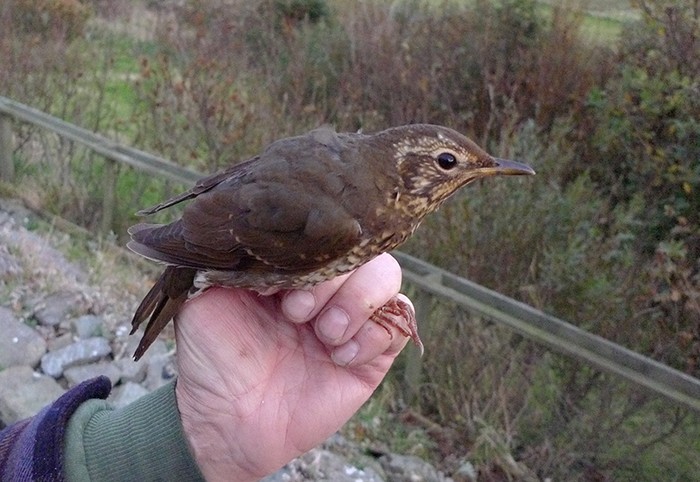
Step forward then Mainland Shetland which, if that outrageous male Rubythroat wasn’t enough already, promptly landed another pulse-racer from the far-off Eastern forests - a Siberian Thrush.
This autumn’s first-winter female was found at Scousburgh, at the southern end of the Shetland Mainland (not too far from Spiggie Loch) - and even before any more of the story was known - there were a few sage guesses from learned folk that threw out the idea as to whether the Shetland bird could prove to actually be the first-winter female that was trapped and ringed at Husøy in Norway on September 24th.
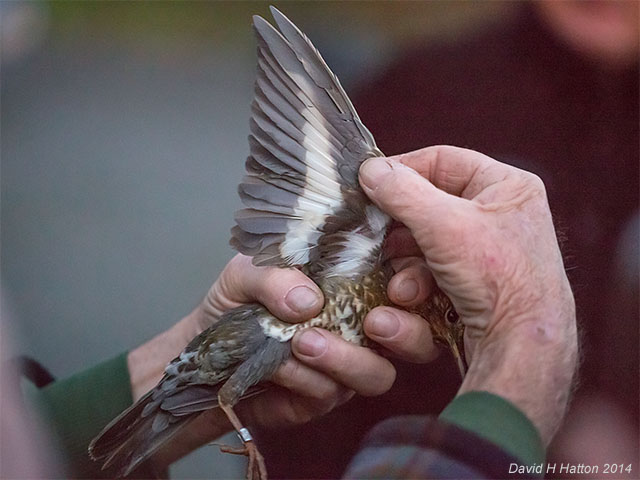
It seemed to be a fair old gap between the dates but, well you never know…
Half an hour later came additional information from the Great North - blow me down, it actually was the Norwegian female! Some 800 miles between the two sites, with a lot of it being the Norwegian and North Sea - one could only begin to guess at what it had been doing and where it had been in the intervening 20 days.
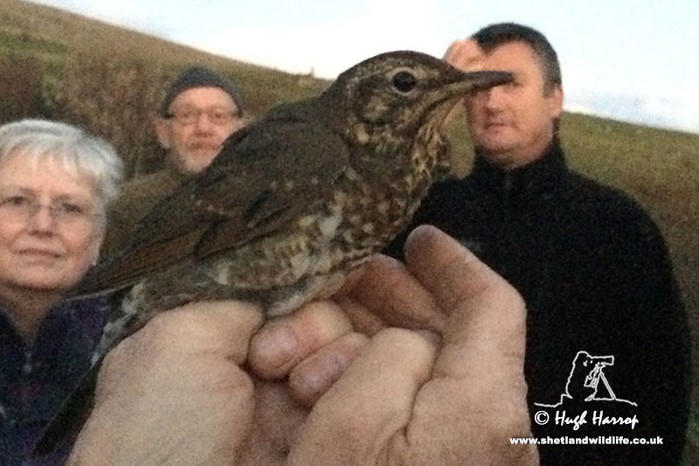
Complete guess work suggests that perhaps the bird continued a “coasting” journey along the Norwegian coast before making a further leap of faith in to the unknown, a journey which took it directly in to Shetland (though whether Scousburgh was its first port of call there is anyone’s guess). That then is the logic, but as we all know only too well, when did logic and rare bird movements always see eye to eye?
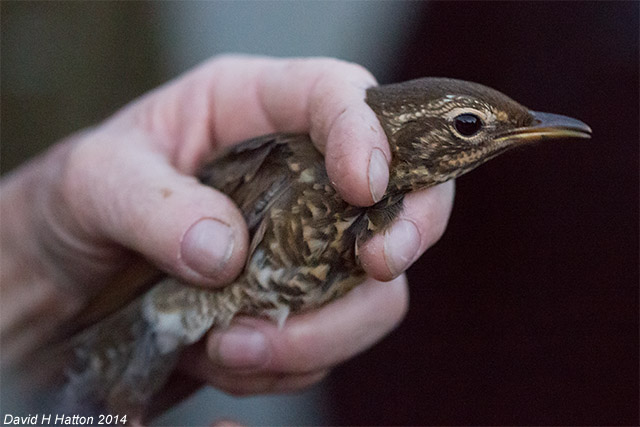
The Scousburgh Siberian Thrush was released late in the day on 15th (long enough for several south Shetland residents to obtain handy views and a few well-placed visitors too) but there was no sign the following day. Did the bird take on another attempt at relocation (there’s been no sign of any wintering young Siberian Thrushes in western or southern Europe to date) or is, as seems more likely, did it continue on its disorientated way and make one final fatal flop in to the Atlantic - which still seems to be the more likely watery denouement to this particular vagrant’s tale…
This autumn’s bird becomes the 11th record of this scrumptious Zoothera and the first in six years - but, perhaps more tellingly - the fourth in the past decade and the third-in-a-row for Shetland.
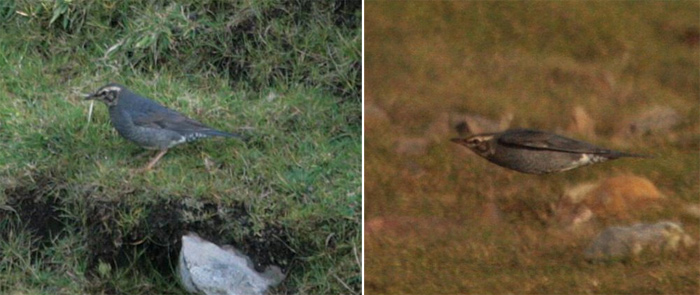
Separate first-winter males arrived on Foula on September 28th 2007 and almost exactly a year later on Fair Isle, on September 25th 2008. The only other record within the last decade was the adult male found on Loop Head (Co. Clare) on October 31st 2004.
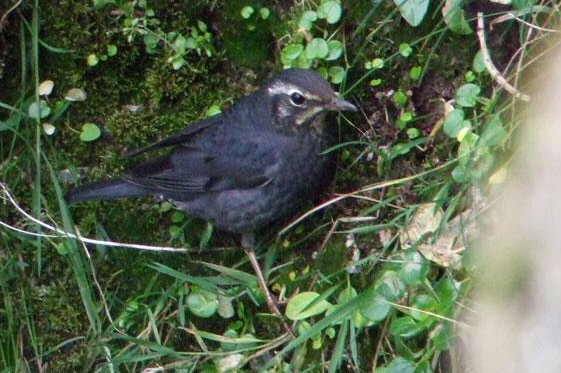
Aside from these four modern classics, further records (working backwards) have been other first-winter males on Gugh (Scilly) for four days in early October 1999 and the famous afternoon bird in the dunes at Burnham Overy (Norfolk) on September 18th 1994.
A first-winter female was trapped and ringed (and roosted overnight) on North Ronaldsay in October 1992 (a comparative long-stayer that one, a week in all), with Ireland’s first being a young male on Cape Clear Island (Co. Cork) on October 18th 1985, with Orkney’s first coming the year before, when a male was on South Ronaldsay on November 11th 1984.
Further back in time come Britain’s first two - a male seen on Christmas Day 1977 in Great Yarmouth (Norfolk) and a four-day male on the Isle of May at the start of October 1954.
At the time back in mid-October, at the end of the section within the round-up that discussed the Scousburgh thrush, the following paragraph appeared - and its one that is worth repeating again - with a note that (obviously) the Eastern Crowned Warbler tally has risen by one in the intervening space of time - a find which, arguably, makes what follows that much more worthy of another airing…
”Siberian Thrush, like Siberian Rubythroat, does appear to be ever-so-slightly more frequent - records for the two species over the last 10 years back this up and the upturn in records of “ultra-Sibes” from way, way off to the East has been clear to see since the turn of the millennium - three Siberian Blue Robins, three Rufous-tailed Robin, two Chestnut-eared Bunting, two Eastern Crowned Warbler and even a single Pale-legged or Sakhalin Leaf Warbler all indicate something almost unimaginable 15 years ago is happening with the bar raised hugely…”
Shetland remains our location tomorrow as we re-visit one of the birds of the autumn (and 2014) which produced the hands-down winner of the rarity photo of the year…
With thanks to Kitty Mermagen, Mark Warren and the North Ronaldsay Bird Observatory for their Eyebrowed Thrush information and to Kevin Kelly for his stunning shots of the bird too. The 2009 North Ron Eyebrowed Thrush shots come courtesy of Dr. Kevin Woodbridge and Paul Brown. Also many thanks to David Hatton, Hugh Harrop and Roger Riddington for their in-hand shots of the 2014 Siberian Thrush and to Steve Minton and Mark Breaks for images of a couple of “blasts from the past”.
Mark Golley
01 January 2015
Thanks to Oriole Birding for sponsoring The 12 Birds of Christmas 2014
 |
|
||||
 |
|
|
|
||
|
|
|
|
|
||
|
|
|
||||
|
|
|
||||






